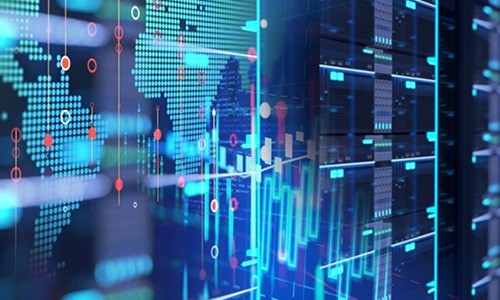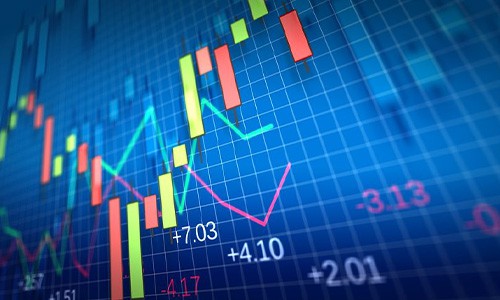Real-Time Analytics: Multiple Forms for Different Applications
As the name implies, real-time analytics analyzes data as soon as it arrives in a system, rather than waiting for “after the fact” analysis. Businesses can leverage this to take immediate action, providing them with an advantage on competitors who may take longer to formulate conclusions.Its use can help companies improve customer engagement, optimize operations, increase revenues, automate processes, and move from a reactive organization to proactive.
There are a variety of real-time analytics applications and uses, including decision automation, real-time insights, stream analytics, and stream processing.
As real-time analytics can execute, automate, and even predict business decisions, it is seen as incredibly valuable to businesses looking for an edge in competitive, data-driven markets, such as financial services, hospitality, and retail/online commerce. It is also being adopted in industries that traditionally have not been known for implementing strong data-backbone strategies such as engine servicing, mining, manufacturing, and the Navy.
The global analytics market was valued at $189 billion in 2019, and that’s expected to surge to $274 billion by 2022, according to Market Reports World. Part of that hefty increase is from real-time analytics tools entering the market.
There are many real-time analytics use cases in a variety of fields, including:
- In healthcare, continuous intelligence applications are enabling clinicians to provide faster, more accurate diagnoses, which IBM’s Mike Beddow spoke to us about. HCA Healthcare and Ketchum Analytics have both launched analytical healthcare tools, to treat sepsis and general health, respectively. Apple has also expanded heavily into healthcare and wellbeing through the Apple Watch, which offers an extensive list of real-time health trackers.
- In public safety, real-time analytics have been used to track and predict disease spread, aid in disaster response, and improve physical safety on university campuses.
- In shipping and logistics, UK supermarket Ocado has utilized analytics to automate warehouse tasks, FedEx built a real-time supply chain app for customers, BioHiTech created an analytical tool to reduce waste on Carnival cruise ships, Stellenbosch University researchers designed a sensor-driven tool to reduce food waste, and both SAP and Caterpillar launched real-time logistics tools for shipping customers.
- In sports, all top league teams are attempting to add more analytics into the game, as a way to get an edge on the competition. In the NBA, the Miami Heat built real-time fan services, coaches, and players at the French Open were able to access detailed analytics by StatsLounge, and sensors inside pucks in the NHL provided coaches with detailed analytics of each player.
As many businesses have unique criteria and challenges, the real-time analytics market has expanded to include many different forms of analytics. Here are some of the most important ones:
Decision Automation
Data used to be taken by a human, interpreted, and acted upon. With decision automation, the time spent interpreting is significantly shortened, as a computer can receive data and act on it without human oversight.
Most automated systems are rule-based, usually focused on repetitive tasks in which the criteria to make a decision is clearly defined. Robotic process automation falls under this category.
There are plenty of decision automation tools already widely used by industries. All major banks use an automated tool to decide whether to accept or decline a loan. This is a monotonous task for a human, as there’s almost always no wiggle room, while a simple one for an analytics tool.

Decision automation enables a wealth of highly sought after technologies, including:
- Business rules: As defined above, rules are essential for a business to define and constrain elements, providing workers or analytics tools with a clear formula of true or false decisions. The definition of every element of the business lends well to the further automation of tasks.
- Business Activity Monitoring (BAM): Having a real-time understanding of what is happening inside a business, through the use of sensors and reports, enhances situational awareness, risk, and operational effectiveness. For example, the introduction of IoT into warehouses and factories has improved the capabilities to detect machine problems and worker productivity issues.
- Continuous Intelligence (CI): An AI-driven analytics tool that uses current streaming events and historical data to provide insights and make decisions. Gartner expects more than half of new business systems will incorporate CI by 2022, for use in customer support and cloud infrastructure.
- Event processing: Businesses want to be able to respond to events as soon as possible. Event processing, which captures, tracks, and analyzes data, builds a library of key identifiers to process information faster, leading to speedier conclusions.
- IT operations analytics: AIOps is the use of AI to identify and report operational patterns, for example, detecting the root cause of a system behavioral problem, reduces the likelihood of it happening again while not having to invest significant human resources into investigating the problem.
Real-time processing and real-time decisions
A valuable asset of real-time analytics is instantaneous decision-making abilities, but that requires a large set of rules and predictive analytics to make the best judgments at the right time. As TDWI fellow Stephen Brobst said: “It isn’t about real-time, it’s about the right time.”
Reducing the need for human input to a minimum vastly improves decision making efficiency and cost. But as with all real-time analytical tools, organizations need to ensure good data quality, scope, and governance.

- Real-time Data mining: The larger the data pool, the more potential from mining it. Google and Facebook have built two of the largest advertising empires from mining user profiles and activity, which are so sophisticated they can guess political preferences, amongst other things. Data pulled from the past can be utilized to predict future events, which is why it almost feels like Facebook is listening to your thoughts when they show adverts.
- Real-time Business intelligence: Utilizing data processing tools, such as server-less analytics, visualizations, and smart data storage solutions, combined with a real-time stream of all business intelligence, provides business leaders with full oversight of operations with zero or near-zero latency.
- Real-time Insights: Pulling information from multiple sources, real-time insights can analyze data in real-time and provide usable insights. These insights can be fed into a decision automation machine, further automating the process.
Stream analytics
The constant flood of data, from devices, sensors, websites, social media, and other sources, is condensed by a stream analytics platform, allowing users to process and take action on analytics in real-time.
In the past few years, we have seen an explosion of stream analytics, which gives businesses the ability to monitor, manage, and analyze real-time streaming data, from all types of sources, on a dashboard. Providers have built platforms that are easily accessible to non-technical users, enabling all types of workers to view and dissect what is happening inside the business.

Examples of streaming analytics include:
- Clickstream analytics: Used to track how many people have visited a website and metrics on how long they stayed, what pages they visited, and other relevant data. Through this, website owners can add new functionality to improve the time spent on the website.
- Predictive analytics: Businesses want to know what’s around the corner, and predictive analytics provides them with that knowledge, by combining data mining, AI, and predictive modeling of past and current events to predict future outcomes. For example, many manufacturers are utilizing predictive analytics in IoT to notify them if a machine is about to break down.
- Prescriptive analytics: Similar to predictive analytics, prescriptive takes past and current data, combines it with AI, in an attempt to find the best course of action. A good example of this is Google’s self-driving car, which makes many decisions on the best course of action from prescriptive analysis of the situation, which has been conducted in a simulation.
- Preventive analytics: Similar to predictive and prescriptive, preventive uses historical and current data to identify the root cause of an issue. Preventive analytics could be utilized by app developers who are trying to figure out why a process has stopped working by looking through historical data of changes and identifying the cause. It can also be utilized by banks to stop fraud by taking data from previous fraud cases and enabling the system to better recognize it in the future.
- Social media analytics: Social media is a big part of a business’s profile and many of the largest use analytics to recognize current trends, manage crises, and observe if sentiment to a product launch is positive or negative.
- Text analytics: Large volumes of unstructured text can be reformatted by text analytics into quantitative data, using machine learning algorithms. This is used by search engines to generate news trends and has been used by Yahoo to shorten news stories to a few key points.
- Video analytics: This is the use of deep learning algorithms to analyze video streams and recognize patterns or changes. A security provider could add this to video cameras, sending out an alert if someone who isn’t an employee is spotted on campus. It has been utilized by developer FogHorn, as a way to unlock a car.
- Visual analytics: Reformatting data into visual analytics on dashboards reduces the complexity and allows workers to interact and make well-informed decisions.
Stream processing
Business intake tons of incomprehensible data, with stream processing, a user can query the data to detect new conditions in real-time. For example, if a wind turbine begins to spin too fast, an alert will be sent to the controller, who can then adapt the turbine to the windier climate.
Stream processing is finding great use in helping government agencies and businesses get through and beyond the COVID-19 pandemic. It can be used to enable pervasive biosensing and offer predictive insights into containment strategies.
Where it used to take a while for data to be virtualized, new applications make this process nearly instantaneous.

- Dashboards: For non-technical workers, the data received may not make any sense to them. With virtualization tools in easily conveyable formats, like web pages, it reduces the barrier to entry, opening up an organization’s data analytics to more employees.
- Data in motion: A business receives data from all sorts of insecure and secure sources. This refers to that data, which has not yet reached its end point.
- Data at rest: Once the data has reached its end point, it is called either data at rest or data in use, depending on if the data is inactive or active, respectively.

